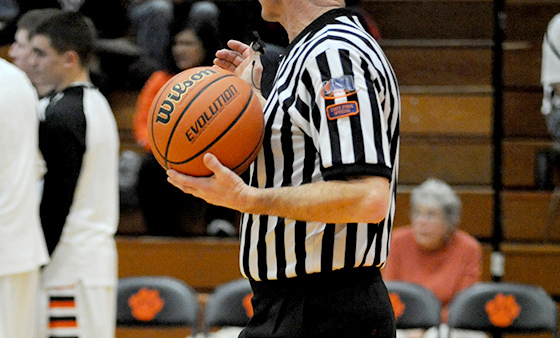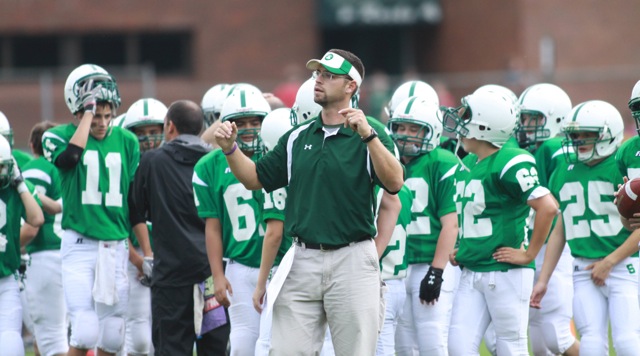7 steps to building your athletic department’s brand
Coaches must actively engage with the community & develop a social media plan
How important is brand awareness to your athletic department? Take a look at the response rate of your last fundraising initiative.
 Think of your brand as the first thing that comes to someone’s mind when your organization is mentioned. A succinct and well-constructed brand is like a formal introduction. People will know who you are and what you are about before you even contact them to ask for a contribution.
Think of your brand as the first thing that comes to someone’s mind when your organization is mentioned. A succinct and well-constructed brand is like a formal introduction. People will know who you are and what you are about before you even contact them to ask for a contribution.
Here are seven steps you must take in order to built or improve your athletic department’s brand:
1. Streamline your logo.
Does the school emblem on the baseball hats differ from the emblem on the volleyball uniforms? Pick one and make it universal for all sports. Also, many schools use multiple color schemes. Make an effort to consolidate down to one scheme. The goal is to have your logo instantly recognized by anyone who sees it. You want to make sure the outstanding effort of your student-athletes is being attributed back to your school and the hard work of your staff.
2. Define your organization.
Every coach has their core values, but evaluate whether they are consistent from sport to sport. An athletic department with a mission statement is not only defining its brand but is also helping maintain professional consistency among the coaching staffs. Even a one-sentence prime directive can lend continuity to the organization.
If a phrase like “service style of leadership” comes up in an interview with the football coach, then again in a newspaper article about the women’s basketball coach, and again in a sound bite form the athletic director, it resonates with people. Your consistent message will begin to define your organization and shape how people think and talk about you.
3. Represent.
Once you have streamlined and defined your brand it is crucial that you understand that each of your student-athletes will add to or detract from your brand’s value anytime they are representing your organization. Unruly behavior can quickly undo months of brand building.
Consider having two punishment scales where, if a student-athlete is misbehaving as a representative of the program, the punishment is more severe. If athletes misbehave during a contest, use it as an opportunity to show your commitment to your core values. Write an apology letter to the local paper or to the opposing team. Coaches who carry themselves in an unprofessional manner make building your brand exponentially harder. Consider prohibiting coaches and administrators from wearing school colors at bars or other locations that may have negative connotations.
4. Network.
When it’s fundraising time, coaches are quick to get out in the community, but what about when it’s not time to solicit donations? Getting involved with your chamber of commerce, the local rotary club and charities is a great way to position your brand and tap into some word-of-mouth marketing.
By participating in these types of events, coaches and administrators have the ability to position their brand directly with decision makers and policy makers. If being a strong networker is not a job requirement for your coaches, consider having a training session to help them build their skills.
5. Maximize the benefits of your community service.
Any community service is good community service. But the more lives your project impacts the more buzz you create for your institution.
Cleaning a field or a road is a big help to your community, but holding an interactive camp for autistic children is a life-changing event. Besides bringing smiles to the participants, you also do a great deal to warm the hearts of their parents, friends and loved ones. It’s also a great opportunity to teach your athletes the positive power of altruism. Don’t be afraid to do a press release, take pictures and ask local businesses to help cover the expenses.
 6. Have a social media marketing plan.
6. Have a social media marketing plan.
Social networking sites allow you to deliver short messages to your target in a highly filtered manner, but simply having an account isn’t enough. You need a well-organized social marketing plan and you need to be diligent with its implementation.
Blasting out upcoming events, results, awards, achievements and any other pertinent information helps. But if you do it sporadically, you lose your audience. Your site needs to be maintained and updated regularly while also making sure all posts are congruent with your branding message. If you are not hiring coaches with social media skills, then arrange training sessions for them to maximize use of this tool.
7. Service your alumni database.
Most institutions have an alumni database, but are they being serviced? The influential alumni should be on a drip campaign where they are contacted regularly through a variety of mediums (emails, phone calls, face-to-face, social networks). Other alumni should be contacted beyond when you are doing a pledge drive.
Holiday cards, birthday cards and newsletters are all ways to let your alumni know you are interested in them as peoplenot just their money. Attending class reunions and making phone calls are also effective ways to let your alumni know you care about them.
Taking measures to build and reinforce your brand pays dividends for your organization. Put a universal plan in place and get your various coaching staffs on board to implement it.
Charles Welde is an adjunct professor at Oklahoma City Community College. He has 13 years of coaching experience at the high school, college and arena league levels.





